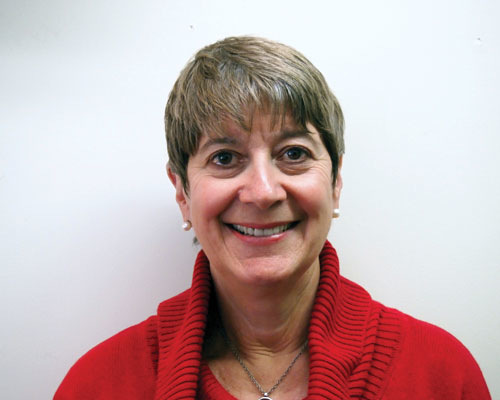Gannett's work ranges from system building for afterschool and youth development, to professional development and creating evaluation systems. Gannett began her work in the afterschool field four decades ago, as a teacher-director of a school-based afterschool program where she worked for seven years. Celebrating her fourth decade with NIOST, she has advanced in the organization from training director, to associate director, to co-director, and now has been the director since 2006.
What are the accomplishments you are most proud of?
My work in the afterschool and youth development field spans close to four decades, so you can understand how difficult it is to answer this question! One of my first jobs out of college was as teacher-director of a school-based, parent-run, afterschool program, and for eight years I had the privilege of doing direct service with young people and a team of highly creative teachers. In many ways, those years were some of the most satisfying. And as I look back, this experience clearly led me to pursue the profession of afterschool and youth development as a life-long career.
In 1981, after I left direct service, Michelle Seligson, founder of the National Institute of Out-of-School Time (previously the School-Age Child Care Project) at Wellesley Centers for Women, hired me to join the project—and the rest is history! My numerous roles at NIOST have provided me with a national (and international) platform to elevate the importance of quality afterschool and positive youth development. There have been so many groundbreaking initiatives and partnerships that have helped to define and advance the field—I am extremely proud of them all.
Where do you see the field in ten years?
In ten years, out-of-school time will be a nationally recognized and professional field of practice. Youth workers, administrators, and other practitioners will be able to articulate and demonstrate a unique identity, knowledge, and sense of competence that is supported by a higher education system, which will have responded with a growing number of courses, certificates, and degree programs. The field will not, however, be based on the setting in which you work, such as afterschool or summer—on the contrary, it will be defined by the purpose of the work and not specific to the time of day or the auspices/setting. Practitioners will have multiple pathways to practice their profession, just as nurses and social workers do. One will be able to choose to work in a school-based afterschool and summer program, a cultural institution such as science museum, a community-based organization such as the Boys and Girls Clubs, or a residential camp or school. We will be recognized as a profession by policymakers and our colleagues in education, who will see us as essential partners in meeting the complex developmental needs of young people.
What are the biggest opportunities for the afterschool industry?
The biggest opportunities for afterschool and youth development will be as school partners. Citywide and statewide system-building efforts will become common practice to assure that services, data, quality, and resources are thoughtfully coordinated and agencies—both public and private—are collaborating. Increasingly, educators and mental health professionals are recognizing the importance of relationships and social-emotional learning, and the afterschool industry has a long history and expertise in this area. We have the great opportunity to bring our pedagogy to school personnel through active and project-based learning, engagement, critical thinking, and working in teams—all critical to the skills young people will need to succeed in school and the workplace.
What are the biggest challenges facing afterschool?
I am concerned that the field will lose its sense of purpose and identity, because other powerful institutions and industries may impede on our progress to claim ownership and possibly reframe or dictate our purpose. I am also very concerned about sustaining adequate funding and resources for children and youth of all income levels to have access to quality out-of-school time opportunities; balancing a longer school day and year with time for physical activity, nature, arts and good old-fashioned fun; and losing our focus on the developmental needs of the whole child at the expense of reaching academic goals.
What makes an after school program successful?
Without question, I believe the most successful afterschool and out-of-school time programs pay careful attention to the developmental needs of youth, to the personal safety of all in their environments, and to the caring adults who listen and provide opportunities for young people to thrive. Such programs have greater outcomes for everyone—their youth, their employees, their communities.
Edited by Amy L Charles, the editorial director of AfterSchool Today magazine, the Official Publication of the National AfterSchool Association.

